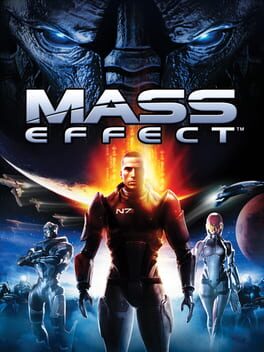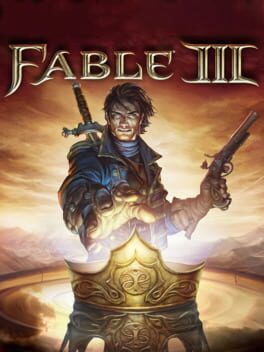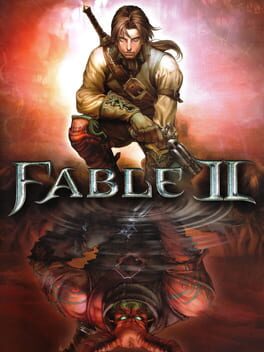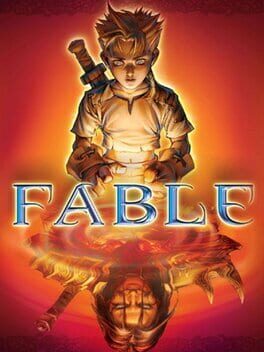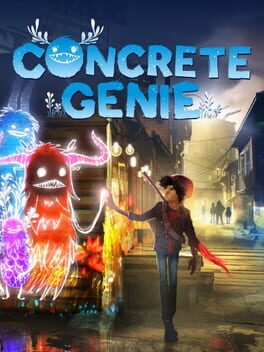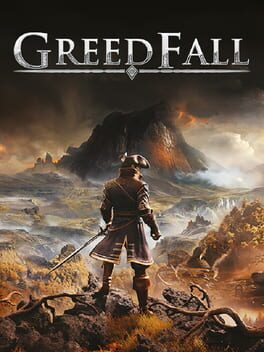BenC404
2007
What a joy it is to finally be able to experience the one that started it all, free from (most of) the bugs and rough edges of the original. Mass Effect 1 has usually been seen be me as the black sheep of the original franchise, even in spite of the controversial parts of Mass Effect 3. Mostly due to my inexperience with this entry compared to the other two, but also I would say due to the radically different direction this one takes to side content, with it being heavily focused on exploring uncharted planets in a big tank not entirely dissimilar to what No Man Sky would attempt nearly 10 years later. This, almost sandbox exploration aspect is probably one of the most divisive things about the game and I’m not entirely surprised BioWare canned it for the sequels, driving around an uncharted planet is fun the first time but it quickly becomes repetitive due to how similar the planets themselves are and the activities you can do within. I did find the Mako fun to control this time around though, even if its quite cartoonish, but ramming Geth never gets old. The side missions are such a massive and detailed part of its sequels it is just odd to see them kinda slapped on here, with them only seeming to exist to pad out the surprisingly brief main story, and as an excuse to ogle the beautiful skyboxes of course.
Another thing I have to criticise is the gunplay. Now part of this may be me choosing to play Engineer on Insanity difficulty but nearly all of the tech powers seemed to have little bearing on the outcome of any given combat situation, usually relegating me to exclusively using the surprisingly powerful pistol and popping a shield boost whenever things got too hot. This may just be me being too used to the sequels, but the cover mechanics and overall choice in how to approach combat seemed rather rudimentary even for 2007. Still though, I will have to wait until my Adept playthrough to experience it fully.
Although not a critique, I was rather startled by how easy Insanity difficulty was. Even though I was playing exclusively with light armour, I could reliably tank most weapons short of rockets or sniper rifles, it was only really on Noveria with the shield-bypassing Rachni that I felt underpowered and cautious, oh and that one side mission on the spaceship with the husks and their bullshit AoE attack. And it was only really the Krogan enemies that felt spongy (although not in an unfair way), with everything else going down in a rather sufficient amount of headshots.
But as far as negatives go, that’s really all I got. It’s clear BioWare’s main intention for ME1 was to set up a beautiful and intriguing sci-fi universe for them to explore in the sequels, and oh boy does it do that and then some. The lore and worldbuilding crafted here is nothing short of astounding, maybe even the best seen in a singular video game. The amount of time and effort put into a space encyclopaedia of virtual history and culture pays off in creating and absolutely one-of-a-kind world full of interesting, well-written characters and an ominous, foreboding plot that is all raised to unforeseen heights by and inspired art design and just a plain commitment to quality. Although this does come at a cost of a lack of distinct weapon and armour design which can cause gameplay to feel a a bit samey at times.
I must restate again just how beautiful this remaster looks and sounds, giving not only new life to the gorgeous cinematics, but also to its wonderful, synth-heavy soundtrack that although repeats itself a fair few times, has a nostalgic quality that is renders it impossible to get old.
A imperfect masterpiece and a true pinnacle of narrative-focused gaming.
Another thing I have to criticise is the gunplay. Now part of this may be me choosing to play Engineer on Insanity difficulty but nearly all of the tech powers seemed to have little bearing on the outcome of any given combat situation, usually relegating me to exclusively using the surprisingly powerful pistol and popping a shield boost whenever things got too hot. This may just be me being too used to the sequels, but the cover mechanics and overall choice in how to approach combat seemed rather rudimentary even for 2007. Still though, I will have to wait until my Adept playthrough to experience it fully.
Although not a critique, I was rather startled by how easy Insanity difficulty was. Even though I was playing exclusively with light armour, I could reliably tank most weapons short of rockets or sniper rifles, it was only really on Noveria with the shield-bypassing Rachni that I felt underpowered and cautious, oh and that one side mission on the spaceship with the husks and their bullshit AoE attack. And it was only really the Krogan enemies that felt spongy (although not in an unfair way), with everything else going down in a rather sufficient amount of headshots.
But as far as negatives go, that’s really all I got. It’s clear BioWare’s main intention for ME1 was to set up a beautiful and intriguing sci-fi universe for them to explore in the sequels, and oh boy does it do that and then some. The lore and worldbuilding crafted here is nothing short of astounding, maybe even the best seen in a singular video game. The amount of time and effort put into a space encyclopaedia of virtual history and culture pays off in creating and absolutely one-of-a-kind world full of interesting, well-written characters and an ominous, foreboding plot that is all raised to unforeseen heights by and inspired art design and just a plain commitment to quality. Although this does come at a cost of a lack of distinct weapon and armour design which can cause gameplay to feel a a bit samey at times.
I must restate again just how beautiful this remaster looks and sounds, giving not only new life to the gorgeous cinematics, but also to its wonderful, synth-heavy soundtrack that although repeats itself a fair few times, has a nostalgic quality that is renders it impossible to get old.
A imperfect masterpiece and a true pinnacle of narrative-focused gaming.
2010
While I respect, and in many ways support, Lionheads decision to steer Fable III in a more story-focused direction. It unfortunately comes at the expense of an overall severe dumbing down and lack of the little details that set Fable I and II out from the RPG crowd. The most devastating to me personally obviously being the fun, witty flavour texts that adorn every item and house in the game. Although this doesn’t mean I am saying the writing is bad, because it is in fact rather good. Hell I’d easily admit that Fable III has some of my favourite characterisation of the whole series. Walter, Jasper, Sabine, Swift, Ben, Page, and of course the returning Reaver are all superbly written and acted and a lot more interesting personality-wise than anything this series has offered beforehand. It’s a shame that the much hyped Voiced Protagonist leaves a lot to be desired to the point where most of the time I even forgot the protagonist was voiced.
One of the major problems that plagues this game is seemingly its insistence in trying to streamline itself as much as possible to set itself out from its predecessors, gone are the standard systems of progression, replaced by a ‘Road to Rule’ system that feels more akin to buying levels than earning them. Gone is a standard inventory system, replaced by a ‘Sanctuary’ hub that although loads fast unless you like swapping weapons constantly, still feels like it was put in just to be another pretty fad or gimmick (this includes the hilariously inaccurate map). Perhaps the most egregious to returning fans though is the complete removal of shop inventory, now replaced by interactive pedestals and mannequins that although look neat, means a shop now only stocks 2-4 items. This is of course also a consequence of streamlining the experience by removing all gradual inclinations of item quality, now instead of 1 star or 2 star health potions, there is now only one all-encompassing health potion that you will never use because Lionhead somehow found a way to dumb the combat down even further than in Fable II.
Elaborating on that, while also building off the inanity of the progression system, is the weapon system specifically. Gone are literally ever standard tier of weapons, replaced completely by a host of legendary weapons that completely break the feel of progression as you will most likely nab the first legendary you find and use it through the rest of the game as they all do similar damage, just with different augmentations, this was done in an attempt to encourage co-op play and “player trading” as if weapon damage really matters here. Although I do think the augment system here is a nice way to build up your weapon in a non-conventional way by completing challenges, its just a shame even the starting ‘Hero’ weapons are more than enough to carry you through the pointlessly simple combat sequences.
The customisation system is bad, terrible even if you compare it to its predecessors. I swear theres like 4 hairstyles and 4 types of facial hair. Even the facial morphing is nearly nullified compared to the previous entries.
The hand-holding replacement for the follow command also feels rather pointless but does act as a great microcosm for how this game relates to II.
That being said I do love the world Lionhead has crafted here, industrial/fantasy is hugely untapped niche and it’s really committed to here, offering the dull, dreary stone walls of a factory juxtaposed with a countryside that feels ripped from a fairytale. The game just looks great, and even though theres not nearly enough of them, every outfit is intricately designed and really pops.
The story itself too is something I found myself really enjoying, at least the Revolution half of the story anyhow. Now don’t get me wrong, as Mel Brooks says “its good to be the king” (especially after the cocktease of Fable II) I just found the first half to be an interesting (although slightly rushed) building up of resources and support reminiscent of Bioware’s style. It’s a shame the narrative takes a nose-dive towards the end as a new, mysterious villain is introduced just a bit too late into the story to make a noticeable impact on the experience. Although it is a step up from Logan, its Jack-of-Blades-esque malevolence and taunting just seems old hat. And it also doesn’t help the late game Royal Decisions slow the game down to a crawl. To me it just feels like a tired, last-minute plot device to attempt and spice the ending up, which it doesn’t really because the final battle is only like 5 minutes long if you rush. At least the side-quests largely seem to benefit from the more dialogue-focused direction as they are some of my favourite of the series.
I enjoy how they attempted to make money meaningful here, but the rate at which you get it at of you buy enough real-estate only causes the problem to loop back on itself totally as before long you will still have more money than you could ever possible spend, even if you constantly repair every house one-by-one in what is probably one of the stupidest additions to the game.
The DLCs are okay, Understone and the Winter House add-on are both duds but the Traitor’s Keep DLC is at least and imaginative adventure through some interesting locales with semi-unique enemies.
All-in-all pretty adequate although a massive step-down from the previous entries in everything except maybe story.
One of the major problems that plagues this game is seemingly its insistence in trying to streamline itself as much as possible to set itself out from its predecessors, gone are the standard systems of progression, replaced by a ‘Road to Rule’ system that feels more akin to buying levels than earning them. Gone is a standard inventory system, replaced by a ‘Sanctuary’ hub that although loads fast unless you like swapping weapons constantly, still feels like it was put in just to be another pretty fad or gimmick (this includes the hilariously inaccurate map). Perhaps the most egregious to returning fans though is the complete removal of shop inventory, now replaced by interactive pedestals and mannequins that although look neat, means a shop now only stocks 2-4 items. This is of course also a consequence of streamlining the experience by removing all gradual inclinations of item quality, now instead of 1 star or 2 star health potions, there is now only one all-encompassing health potion that you will never use because Lionhead somehow found a way to dumb the combat down even further than in Fable II.
Elaborating on that, while also building off the inanity of the progression system, is the weapon system specifically. Gone are literally ever standard tier of weapons, replaced completely by a host of legendary weapons that completely break the feel of progression as you will most likely nab the first legendary you find and use it through the rest of the game as they all do similar damage, just with different augmentations, this was done in an attempt to encourage co-op play and “player trading” as if weapon damage really matters here. Although I do think the augment system here is a nice way to build up your weapon in a non-conventional way by completing challenges, its just a shame even the starting ‘Hero’ weapons are more than enough to carry you through the pointlessly simple combat sequences.
The customisation system is bad, terrible even if you compare it to its predecessors. I swear theres like 4 hairstyles and 4 types of facial hair. Even the facial morphing is nearly nullified compared to the previous entries.
The hand-holding replacement for the follow command also feels rather pointless but does act as a great microcosm for how this game relates to II.
That being said I do love the world Lionhead has crafted here, industrial/fantasy is hugely untapped niche and it’s really committed to here, offering the dull, dreary stone walls of a factory juxtaposed with a countryside that feels ripped from a fairytale. The game just looks great, and even though theres not nearly enough of them, every outfit is intricately designed and really pops.
The story itself too is something I found myself really enjoying, at least the Revolution half of the story anyhow. Now don’t get me wrong, as Mel Brooks says “its good to be the king” (especially after the cocktease of Fable II) I just found the first half to be an interesting (although slightly rushed) building up of resources and support reminiscent of Bioware’s style. It’s a shame the narrative takes a nose-dive towards the end as a new, mysterious villain is introduced just a bit too late into the story to make a noticeable impact on the experience. Although it is a step up from Logan, its Jack-of-Blades-esque malevolence and taunting just seems old hat. And it also doesn’t help the late game Royal Decisions slow the game down to a crawl. To me it just feels like a tired, last-minute plot device to attempt and spice the ending up, which it doesn’t really because the final battle is only like 5 minutes long if you rush. At least the side-quests largely seem to benefit from the more dialogue-focused direction as they are some of my favourite of the series.
I enjoy how they attempted to make money meaningful here, but the rate at which you get it at of you buy enough real-estate only causes the problem to loop back on itself totally as before long you will still have more money than you could ever possible spend, even if you constantly repair every house one-by-one in what is probably one of the stupidest additions to the game.
The DLCs are okay, Understone and the Winter House add-on are both duds but the Traitor’s Keep DLC is at least and imaginative adventure through some interesting locales with semi-unique enemies.
All-in-all pretty adequate although a massive step-down from the previous entries in everything except maybe story.
2008
This review contains spoilers
On paper this really seems like the perfect sequel to the first Fable, an entirely new story, and world that builds on the mechanics and lore of the original without being fan-servicey, and as this was my first introduction to the series and the game I grew up with, I was very excited to return to it.
But after playing Fable: Anniversary to death, this one feels almost lacking somehow, yes the combat is significantly dumbed down, the lack of enemy blocking and the combat multiplier I can excuse, but the removal of nearly all the support combat spells and the whole mana managing aspect leaves a big hole and turns the combat not from a frustrating but almost strategic mess like the original, but a boring slog that seems to only exist to pad the games length. Shame about the silver chests and to a lesser extent the Demon Doors too as the rewards that lie within them nearly aren’t worth the hassle, especially the chests which only ever contain gold or augments.
Speaking of padding, the much hailed property buying mechanic, is expanded on exponentially in Fable II, bringing a completely new side to the game, with varying results. Now it is nice to be able to buy all these properties and look back on your empire of economy-crashing realty, and it does give a much needed life to the end game, but it really only exists to supplement your income, and much like Fable I, once you make all that money there is nothing to really spend it on. Again it’s a nice thing to have (and the flavour text of each property makes every purchase feel unique) but it is just too disjointed from the narrative and doesn’t really do enough to justify its own existence.
The story is another thing I take a slight slight issue with. As although the side quests are much more fleshed-out and interesting this time around, it comes at the dire cost of the main story feeling bland and rushed. Now a generic story is nothing new, but spending the whole game hyping up an alliance of the 4 last heroes, just for the final mission to limp its way towards the end as soon as they finally team up seems like a giant slap in the face to those that were expecting something more. I have nothing against any of the characters (though it’s clear Reaver was the only one they put real effort in to, not that I’m complaining) but more quests to flesh out their stories would’ve made the ending go down a lot smoother, something kind of like the loyalty missions from Mass Effect. I also wish Theresa would remind me that my health was low in a timely fashion.
Another thing they’ve changed that I can’t say I fully agree with is the entire art-style itself. Gone are the cartoonishly enlarged extremities of the characters or the absurdly large armour sets in favour of a more grounded and realistic take. I imagine this is to reflect the modernisation of Albion but it takes away a lot of the charm for me personally.
The 2 DLCs that released for this game are also sufficiently entertaining although it feels like they only exist to supply the player with unique items that can even break early progression if you’re not careful, this is especially true for Knothole Island, as it feels like the town and even the quest itself is pushed aside to show the weather-changing mechanics and to shower you in items.
That being said, I do really love the world Lionhead has created this time around, building on the generic fantasy setting of the first into an Enlightenment/Fantasy hybrid that never takes itself too seriously, the writing is just as sharp and witty as the first with a lot more items for them to insert their always creative flavour texts in to. The music is also just as charming and fairytale-like. Everything in this game just feels so lovingly crafted right down to the smallest detail, it is really hard to dislike it.
In many ways this feels like the Evil Dead II to Fables The Evil Dead. Bigger, more expensive, and in theory better in every way, but lacking some of the charm and authenticity of the original. The real tragedy though is that I wish I could compare Fable III to Army of Darkness, hey wait a minute...
But after playing Fable: Anniversary to death, this one feels almost lacking somehow, yes the combat is significantly dumbed down, the lack of enemy blocking and the combat multiplier I can excuse, but the removal of nearly all the support combat spells and the whole mana managing aspect leaves a big hole and turns the combat not from a frustrating but almost strategic mess like the original, but a boring slog that seems to only exist to pad the games length. Shame about the silver chests and to a lesser extent the Demon Doors too as the rewards that lie within them nearly aren’t worth the hassle, especially the chests which only ever contain gold or augments.
Speaking of padding, the much hailed property buying mechanic, is expanded on exponentially in Fable II, bringing a completely new side to the game, with varying results. Now it is nice to be able to buy all these properties and look back on your empire of economy-crashing realty, and it does give a much needed life to the end game, but it really only exists to supplement your income, and much like Fable I, once you make all that money there is nothing to really spend it on. Again it’s a nice thing to have (and the flavour text of each property makes every purchase feel unique) but it is just too disjointed from the narrative and doesn’t really do enough to justify its own existence.
The story is another thing I take a slight slight issue with. As although the side quests are much more fleshed-out and interesting this time around, it comes at the dire cost of the main story feeling bland and rushed. Now a generic story is nothing new, but spending the whole game hyping up an alliance of the 4 last heroes, just for the final mission to limp its way towards the end as soon as they finally team up seems like a giant slap in the face to those that were expecting something more. I have nothing against any of the characters (though it’s clear Reaver was the only one they put real effort in to, not that I’m complaining) but more quests to flesh out their stories would’ve made the ending go down a lot smoother, something kind of like the loyalty missions from Mass Effect. I also wish Theresa would remind me that my health was low in a timely fashion.
Another thing they’ve changed that I can’t say I fully agree with is the entire art-style itself. Gone are the cartoonishly enlarged extremities of the characters or the absurdly large armour sets in favour of a more grounded and realistic take. I imagine this is to reflect the modernisation of Albion but it takes away a lot of the charm for me personally.
The 2 DLCs that released for this game are also sufficiently entertaining although it feels like they only exist to supply the player with unique items that can even break early progression if you’re not careful, this is especially true for Knothole Island, as it feels like the town and even the quest itself is pushed aside to show the weather-changing mechanics and to shower you in items.
That being said, I do really love the world Lionhead has created this time around, building on the generic fantasy setting of the first into an Enlightenment/Fantasy hybrid that never takes itself too seriously, the writing is just as sharp and witty as the first with a lot more items for them to insert their always creative flavour texts in to. The music is also just as charming and fairytale-like. Everything in this game just feels so lovingly crafted right down to the smallest detail, it is really hard to dislike it.
In many ways this feels like the Evil Dead II to Fables The Evil Dead. Bigger, more expensive, and in theory better in every way, but lacking some of the charm and authenticity of the original. The real tragedy though is that I wish I could compare Fable III to Army of Darkness, hey wait a minute...
2004
Although it may feel clunky and antiquated by todays standards, the original Fable remains a landmark of fantasy RPGs as it delivers one of the purest and most charming fairytale stories to ever have been put to game. Featuring memorable music, characters and locations, all interwoven perfectly by a fantastically witty and whimsical script that soon came to define the whole series.
My only major gripe is with the combat and how it makes the game a slog to get through and near unplayable if it were not for the spells. Given the tutorials during the prologue, it is clear Lionhead had ambitions to employ 3 distinct classes for players to experiment with, but unfortunately when it comes to combat, the game seems to be forcefully nudging you towards a spell/sword playstyle to avoid making half the game torturous with its auto-blocking enemies with nearly instantaneous knock-down attacks.
And although simplistic now, all the RPG mechanics simmered throughout, such as marriage, pub games, drinking, and buying properties, go a long way to making the game feel alive and breathing, and although these were all fleshed out further in later entries, it is great to see where it all started. This game may feel old, but it still feels ahead of its time for 2004.
My favourite thing about Fable has to be all the funny little item descriptions and headstone engravings though, they never fail to make me laugh.
My only major gripe is with the combat and how it makes the game a slog to get through and near unplayable if it were not for the spells. Given the tutorials during the prologue, it is clear Lionhead had ambitions to employ 3 distinct classes for players to experiment with, but unfortunately when it comes to combat, the game seems to be forcefully nudging you towards a spell/sword playstyle to avoid making half the game torturous with its auto-blocking enemies with nearly instantaneous knock-down attacks.
And although simplistic now, all the RPG mechanics simmered throughout, such as marriage, pub games, drinking, and buying properties, go a long way to making the game feel alive and breathing, and although these were all fleshed out further in later entries, it is great to see where it all started. This game may feel old, but it still feels ahead of its time for 2004.
My favourite thing about Fable has to be all the funny little item descriptions and headstone engravings though, they never fail to make me laugh.
2016
A massive step down from the simpler original. Better sprites and more customisation options do not even come near to making up for the near predatory ads here, as it feels like every time you replay there comes a chance of a mobile game ad that is unskippable for 5 seconds. This may seem insignificant but it goes a long way to breaking up the normally addictive flow of the game.
As for the game itself, if you like the courses in the original you’ll probably like the courses here although there is a noticeable step down in course quality, although I feel they rely too much on quick flashing lasers that are no doubt included to deliver unexpected deaths and therefore more ads.
As for the game itself, if you like the courses in the original you’ll probably like the courses here although there is a noticeable step down in course quality, although I feel they rely too much on quick flashing lasers that are no doubt included to deliver unexpected deaths and therefore more ads.
2019
I do not have a single artistic bone in my body, and I say forthright that I would probably not have picked up this quaint indie game were it not for the fact it is free this month for PSN users. This circumvention of the rather steep £30 tag coupled with the fact I went in with no expectations likely makes me more lenient on reviewing this.
Nevertheless I enjoyed this for what it was, a heavily stylised and cartoonish little drawing game where you use your controller to draw (preset) neon monsters on walls and decorate them with (preset) tails, ears, hats and various other little bits to try to breathe life into these otherwise characterless creatures. But there lies perhaps the biggest problem (and surely the most grating for the artists), the fact there are many restrictions to what you can paint. Yes you can draw cute landscapes on just about every wall and theres a good amount of natural objects to choose from, but even if you manage to wrangle your controller into the shape you want these objects to take on the wall, by the time you’re done it still looks more like a great neon mess than anything resembling the natural world. The same is true for the aforementioned genies, as although there are numerous customisation options for you to drunkenly play ‘pin-the-tail-on the-genie’, the difficulty in making it look the way you want combined with the brief time you most likely will spend with these individuals before they become lumped together in your genie puzzle-solving army makes most efforts to make them standout futile (the most artistic genie I made was one with 8 gargantuan spider legs jutting out of its body, something I quickly altered after the first time I saw him bounding towards me at record speeds), in this sense they are much akin to the messy environmental drawings, just with a friendlier face. As mentioned, there are puzzles in this game that have to be solved to progress, although these puzzles amount to little more than ‘call the genie over and draw stuff for it’. The combat system they introduce is similarly simple and limiting, equating to little more than periodic button-pressing.
I had no qualms about the overarching story, yes it was simple and cliche, but it was done in a well enough way that I didn’t really mind. And how it incorporates a great change up in gameplay during the last chapter is quite well done too, making it feel truly like a final push against the ‘Darkness’. The world that this story takes place in is also an intriguing one, a forgotten fishing village enveloped by an unknown evil sets an effectively eerie atmosphere from the start, making all the more incentive to ‘paint the town back to life’ as standing back and witnessing some of the light you have brought back to Denska really helps to carry motivation for seeing out the story. Although the short completion time of this, even if you go for Platinum, stops most of the gameplay and story aspects from really shining.
All-in-all a unique little indie title doesn’t quite justify its £30 price tag due to all the limits it imposes on the players creativity. Still for the price of free you could do a lot worse and you’re bound to get some forgettable fun out of this.
Nevertheless I enjoyed this for what it was, a heavily stylised and cartoonish little drawing game where you use your controller to draw (preset) neon monsters on walls and decorate them with (preset) tails, ears, hats and various other little bits to try to breathe life into these otherwise characterless creatures. But there lies perhaps the biggest problem (and surely the most grating for the artists), the fact there are many restrictions to what you can paint. Yes you can draw cute landscapes on just about every wall and theres a good amount of natural objects to choose from, but even if you manage to wrangle your controller into the shape you want these objects to take on the wall, by the time you’re done it still looks more like a great neon mess than anything resembling the natural world. The same is true for the aforementioned genies, as although there are numerous customisation options for you to drunkenly play ‘pin-the-tail-on the-genie’, the difficulty in making it look the way you want combined with the brief time you most likely will spend with these individuals before they become lumped together in your genie puzzle-solving army makes most efforts to make them standout futile (the most artistic genie I made was one with 8 gargantuan spider legs jutting out of its body, something I quickly altered after the first time I saw him bounding towards me at record speeds), in this sense they are much akin to the messy environmental drawings, just with a friendlier face. As mentioned, there are puzzles in this game that have to be solved to progress, although these puzzles amount to little more than ‘call the genie over and draw stuff for it’. The combat system they introduce is similarly simple and limiting, equating to little more than periodic button-pressing.
I had no qualms about the overarching story, yes it was simple and cliche, but it was done in a well enough way that I didn’t really mind. And how it incorporates a great change up in gameplay during the last chapter is quite well done too, making it feel truly like a final push against the ‘Darkness’. The world that this story takes place in is also an intriguing one, a forgotten fishing village enveloped by an unknown evil sets an effectively eerie atmosphere from the start, making all the more incentive to ‘paint the town back to life’ as standing back and witnessing some of the light you have brought back to Denska really helps to carry motivation for seeing out the story. Although the short completion time of this, even if you go for Platinum, stops most of the gameplay and story aspects from really shining.
All-in-all a unique little indie title doesn’t quite justify its £30 price tag due to all the limits it imposes on the players creativity. Still for the price of free you could do a lot worse and you’re bound to get some forgettable fun out of this.
2014
2019
First Playthrough: Medium Difficulty / Pure Melee Build
Being free on PS Plus I will admit I went into Greedfall with little to no hype or expectations and only a passing experience of Dragon Age-esque RPGs. But I will say here the generally high level of quality on display here makes very enjoyable to play despite its many shortfalls. The storyline is engaging an intertwining to the point where even the shortest side quest feels set up with the time and care of a main quest quick keeps the overall story ever engaging despite the unimaginative writing, sometimes stiff voice acting and one-note though overall decently likeable characters.
Although this engagement comes at the cost of a combat system that feels incredibly shallow and monotonous, especially in the end game, yes there are 3 distinct play styles and a multitude of weapons included in each, but when they all have the same moveset and when combat generally boils down to two buttons, maybe a binded broken healing spell, and one special move it is bound to feel tiresome, even grating when you account for your companions incessant one-liners throughout.
Speaking of, the games simplistic approach to RPGs is no more prevalent than in its companions as due to a lack of controllable companion levelling or any combat interactivity with them at all, makes them feel more like minions and damage sponges rather than 2/3rds of a coherent and organised team. The lack of different set-ups and playstyles of these companions definitely hurts the replayability although the differing dialogue they offer in missions adds some flavour to the proceedings, it is not enough to keep people coming back.
The lore of the world and the characters is also interesting although it is held back by it being told nearly exclusively through dialogue with basically no in-game texts expanding on it. Just another part that looks intriguing but is too shallow to make an impact.
Although it can look fairly underwhelming for a 2019 release, the scenery looks stunning at points and exploration is encouraged, the maps are fairly small in number and size but Spiders clearly put time and care into making them all look unique.
All-in-all a fairly enjoyable experience whose grand and complex vision is clearly held back by budgetary constraints. I would be interested in a Spiders game with more time and money put in as this clearly shows heart and passion for the genre and is rather well-made and bug-free. I wonder if my magic-focused second playthrough on extreme will give me any different impressions.
ENDING SPOILERS:
One of my most major gripes and one that left me with a sour taste in my mouth as the credits rolled is the ending, not the final Fallout-esque epilogue sequence but the whole “final battle” itself. It builds it up as some final big defence with all the major factions against Constantin’s beast army. And I’m sure that battle was grand and all but having you come in with all 5 of your companions at the big fight has ended in some kinda Avengers Assemble moment only to fight 3 small groups of stragglers before you battle the Midir-like final boss left me incredibly underwhelmed, especially as the build-up was so engaging throughout.
Being free on PS Plus I will admit I went into Greedfall with little to no hype or expectations and only a passing experience of Dragon Age-esque RPGs. But I will say here the generally high level of quality on display here makes very enjoyable to play despite its many shortfalls. The storyline is engaging an intertwining to the point where even the shortest side quest feels set up with the time and care of a main quest quick keeps the overall story ever engaging despite the unimaginative writing, sometimes stiff voice acting and one-note though overall decently likeable characters.
Although this engagement comes at the cost of a combat system that feels incredibly shallow and monotonous, especially in the end game, yes there are 3 distinct play styles and a multitude of weapons included in each, but when they all have the same moveset and when combat generally boils down to two buttons, maybe a binded broken healing spell, and one special move it is bound to feel tiresome, even grating when you account for your companions incessant one-liners throughout.
Speaking of, the games simplistic approach to RPGs is no more prevalent than in its companions as due to a lack of controllable companion levelling or any combat interactivity with them at all, makes them feel more like minions and damage sponges rather than 2/3rds of a coherent and organised team. The lack of different set-ups and playstyles of these companions definitely hurts the replayability although the differing dialogue they offer in missions adds some flavour to the proceedings, it is not enough to keep people coming back.
The lore of the world and the characters is also interesting although it is held back by it being told nearly exclusively through dialogue with basically no in-game texts expanding on it. Just another part that looks intriguing but is too shallow to make an impact.
Although it can look fairly underwhelming for a 2019 release, the scenery looks stunning at points and exploration is encouraged, the maps are fairly small in number and size but Spiders clearly put time and care into making them all look unique.
All-in-all a fairly enjoyable experience whose grand and complex vision is clearly held back by budgetary constraints. I would be interested in a Spiders game with more time and money put in as this clearly shows heart and passion for the genre and is rather well-made and bug-free. I wonder if my magic-focused second playthrough on extreme will give me any different impressions.
ENDING SPOILERS:
One of my most major gripes and one that left me with a sour taste in my mouth as the credits rolled is the ending, not the final Fallout-esque epilogue sequence but the whole “final battle” itself. It builds it up as some final big defence with all the major factions against Constantin’s beast army. And I’m sure that battle was grand and all but having you come in with all 5 of your companions at the big fight has ended in some kinda Avengers Assemble moment only to fight 3 small groups of stragglers before you battle the Midir-like final boss left me incredibly underwhelmed, especially as the build-up was so engaging throughout.
